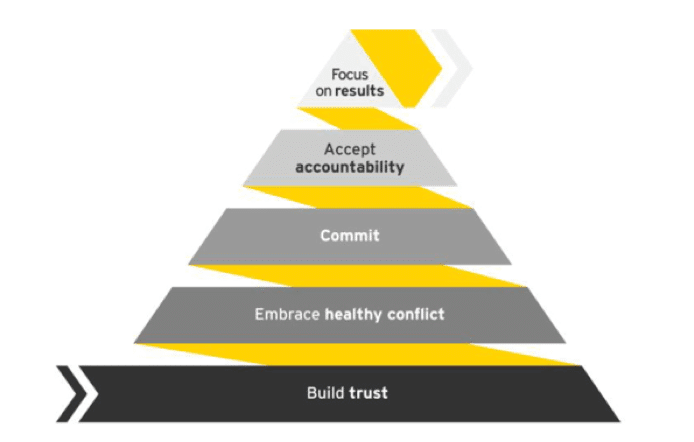Key Takeaways
- Strategic Necessity: Career Development Plans are essential for technology organizations, with companies investing in professional development experiencing 2X higher employee retention rates
- Skills-First Approach: Focus on developing AI, big data, cybersecurity, and technology literacy skills, which top the list of fastest-growing competencies in the tech sector
- Systematic Implementation: Successful Career Development Plans follow five essential steps: skills assessment, goal definition, gap identification, action planning, and continuous tracking
- Future-Proofing Strategy: Emphasize creative thinking, resilience, flexibility, and lifelong learning capabilities to prepare for the evolving technology landscape
- ROI-Driven Results: Organizations with strong learning cultures achieve 218% higher income per employee compared to those without formalized training programs
- Leadership Responsibility: Career development is not solely HR’s responsibility, but requires active engagement from every leader in the organization to drive meaningful conversations and growth opportunities
- Continuous Evolution: Regular review and adaptation of Career Development Plans ensure alignment with rapidly changing technology trends and organizational needs
Why Career Development Plans Matter in Technology
The technology industry’s relentless pace of innovation creates unique challenges for professional development that traditional career planning approaches cannot adequately address. Unlike other sectors where skills might remain relevant for decades, technology professionals must continuously adapt to new programming languages, frameworks, methodologies, and emerging technologies that can fundamentally alter their role requirements within months rather than years.
Current industry data reveals the magnitude of this challenge. The World Economic Forum’s Future of Jobs Report 2025 identifies that 92% of today’s jobs require digital skills, yet approximately 33% of workers lack the basic digital competencies needed for their current roles. This skills gap becomes even more pronounced when considering advanced technologies, where the demand for AI and machine learning expertise far exceeds the available talent pool.
The impact on employee retention and organizational performance is profound. Research consistently demonstrates that companies with strong learning cultures achieve 57% higher employee retention rates compared to those with moderate learning cultures, at 27%. In the competitive technology talent market, where skilled professionals have numerous opportunities, this retention advantage translates directly to reduced recruitment costs, preserved institutional knowledge, and maintained project continuity.
Furthermore, the return on investment for Career Development Plans in technology organizations is substantial. Companies that implement formalized training programs generate 218% higher income per employee than those without structured development initiatives. This ROI stems not only from improved individual performance but also from enhanced innovation capacity, as employees with diverse skill sets can contribute to cross-functional projects and identify novel solutions to complex technical challenges.
The strategic importance of Career Development Plans extends beyond individual and organizational benefits to encompass broader industry resilience. As 64% of employers identify supporting employee health and well-being as a key strategy for talent attraction, comprehensive career development becomes a competitive differentiator that attracts top talent while building the adaptive capacity necessary for long-term success in an increasingly automated and AI-driven technology landscape.
5 Essential Steps to Create a Career Development Plan
Creating an effective Career Development Plan requires a systematic approach that balances individual aspirations with organizational needs while accounting for the dynamic nature of technology roles. The following five-step framework offers a comprehensive methodology for developing robust career development strategies that foster both personal growth and business outcomes.
Step 1: Assess Current Skills and Competencies
The foundation of any successful Career Development Plan begins with a thorough assessment of existing capabilities. This assessment must go beyond traditional job descriptions to encompass both technical competencies and soft skills that are increasingly valuable in technology leadership roles. The evaluation should include programming languages, frameworks, cloud platforms, data analysis tools, project management methodologies, and emerging technologies relevant to the individual’s current and desired roles.
Technology professionals should utilize multiple assessment methods to gain a comprehensive view of their capabilities. Technical skills assessments can be conducted through coding challenges, certification exams, and peer reviews of recent projects. Soft skills evaluation may include 360-degree feedback sessions, leadership assessments, and reviews of communication effectiveness. Many organizations are implementing skills-based talent management systems that provide objective measurements of competency levels across various domains.
The assessment process should also identify transferable skills that may not be immediately obvious but could prove valuable in future roles. For example, a software developer with strong debugging skills may possess analytical thinking capabilities that translate well to roles in data science or cybersecurity. Similarly, experience with agile methodologies demonstrates adaptability and collaborative skills that are essential for leadership positions.
Step 2: Define Career Goals and Objectives
Once current capabilities are clearly understood, the next step involves establishing specific, measurable career objectives that align with both personal aspirations and organizational opportunities. These goals should be structured using the SMART framework—Specific, Measurable, Achievable, Relevant, and Time-bound—while remaining flexible enough to adapt to changing industry conditions.
Career goals in technology should encompass multiple dimensions, including technical expertise, leadership development, industry specialization, and personal fulfillment. For instance, a mid-level software engineer might set objectives to become a technical lead within 18 months, obtain AWS certification within six months, and develop presentation skills to effectively communicate with stakeholders. These goals should be documented with clear success criteria and regular milestone checkpoints to ensure progress.
The goal-setting process must also consider the broader technology landscape and emerging trends. Given that AI and big data top the list of fastest-growing skills, professionals should evaluate how these technologies impact their career trajectory and incorporate relevant learning objectives into their development plans. This forward-thinking approach ensures that career goals remain relevant and valuable as the industry continues to evolve.
Step 3: Identify Skill Gaps and Learning Opportunities
The gap analysis phase involves comparing current capabilities against the requirements for desired career objectives, identifying specific areas where development is needed. This analysis should consider both immediate skill gaps that might prevent progression in current roles and future competencies that will be required for long-term career success.
Technology skill gaps often fall into several categories: technical skills (programming languages, tools, platforms), domain knowledge (industry-specific expertise, business acumen), leadership capabilities (team management, strategic thinking), and emerging technology competencies (AI, machine learning, blockchain, cybersecurity). Each gap should be prioritized based on its impact on career objectives and the time required for development.
Learning opportunities to address these gaps can take many forms, from formal education and certification programs to hands-on project experience and mentorship relationships. The most effective Career Development Plans incorporate diverse learning modalities that accommodate different learning styles and time constraints. For example, busy technology professionals might benefit from microlearning modules that can be completed during short breaks, while others might prefer intensive bootcamps or university courses for comprehensive skill development.
Step 4: Create Action Plans and Timelines
Translating identified learning opportunities into concrete action plans requires careful consideration of resource allocation, time management, and sequencing of development activities. Each learning objective should be broken down into specific tasks with assigned deadlines, resource requirements, and success metrics.
The action plan should account for the reality that 20% of employees report not having time for training despite their desire to learn. To address this challenge, successful Career Development Plans incorporate learning activities into daily work routines wherever possible. This might include dedicating specific hours each week to skill development, participating in cross-functional projects that provide exposure to new technologies, or taking on stretch assignments that require learning new competencies.
Timeline development should be realistic while maintaining momentum toward career objectives. Research suggests that frequent, ongoing development activities are more effective than sporadic intensive training sessions. A well-structured timeline might include daily learning habits (such as reading industry publications), weekly skill practice sessions, monthly progress reviews, and quarterly goal assessments.
Step 5: Implement Tracking and Review Systems
The final step involves establishing mechanisms for monitoring progress, measuring results, and adapting the Career Development Plan based on changing circumstances and new opportunities. Effective tracking systems provide both quantitative metrics (certifications earned, projects completed, skills assessments passed) and qualitative feedback (peer reviews, manager evaluations, self-reflection assessments).
Regular review cycles are essential for maintaining plan relevance and effectiveness. Monthly check-ins can address immediate challenges and adjust short-term activities, while quarterly reviews provide opportunities for more substantial plan modifications based on changing career goals or industry conditions. Annual comprehensive reviews should evaluate overall progress, celebrate achievements, and establish objectives for the following year.
The tracking system should also incorporate feedback from multiple stakeholders including supervisors, peers, mentors, and direct reports where applicable. This multi-perspective approach provides a more complete picture of development progress and identifies blind spots that might not be apparent through self-assessment alone.
| Step | Key Activities | Timeline | Success Metrics |
|---|---|---|---|
| 1. Skills Assessment | Technical evaluations, 360 feedback, competency mapping | 2-4 weeks | Comprehensive skills inventory, gap identification |
| 2. Goal Definition | SMART goal setting, career visioning, stakeholder alignment | 1-2 weeks | Clear, measurable objectives with timelines |
| 3. Gap Analysis | Skills comparison, learning opportunity research, prioritization | 2-3 weeks | Prioritized development areas, learning plan |
| 4. Action Planning | Task breakdown, resource allocation, timeline creation | 1-2 weeks | Detailed action plan with milestones |
| 5. Tracking & Review | Progress monitoring, regular check-ins, plan adjustments | Ongoing | Regular progress reports, plan updates |
Technology-Specific Career Development Strategies
The unique characteristics of technology careers require specialized approaches to professional development that account for rapid technological change, the importance of continuous learning, and the intersection of technical expertise with business acumen. Technology professionals must navigate a landscape where programming languages can become obsolete within a decade, new frameworks emerge constantly, and the most valuable skills often combine technical depth with strategic thinking capabilities.
Artificial intelligence and machine learning represent the most significant growth areas for technology career development. As these technologies become integrated into virtually every aspect of business operations, professionals across all technology disciplines benefit from developing AI literacy. This doesn’t necessarily mean becoming a machine learning engineer, but rather understanding how AI can enhance existing roles, automate routine tasks, and create new opportunities for innovation. Career Development Plans should include exposure to AI tools, understanding of ethical AI principles, and exploration of how machine learning can be applied within specific domains.
Cybersecurity and data skills have become foundational competencies rather than specialized niches. With cyber threats increasing in sophistication and data privacy regulations expanding globally, technology professionals at all levels need security awareness and data handling expertise. Career development in this area might include security certification programs, data governance training, and hands-on experience with security tools and practices. The goal is not to become a security specialist but to integrate security thinking into all technology decisions and implementations.
Leadership development for technology professionals requires a unique blend of technical credibility and people management skills. Unlike traditional management roles where technical expertise might be less critical, technology leaders must maintain sufficient technical depth to make informed decisions while developing the communication, strategic thinking, and team building capabilities necessary for organizational leadership. This dual requirement makes leadership development particularly challenging and important for technology career advancement.
The most successful technology Career Development Plans emphasize building T-shaped skill profiles—deep expertise in one or two technical areas combined with broad knowledge across multiple domains. This approach provides the specialization necessary for technical credibility while maintaining the flexibility to adapt to changing technology landscapes and take advantage of cross-functional opportunities that often lead to leadership roles.
Common Pitfalls and How to Avoid Them
Even well-intentioned Career Development Plans can fail to deliver expected results when common implementation pitfalls are not anticipated and addressed. Understanding these challenges and their solutions is crucial for technology leaders who want to ensure their development initiatives generate meaningful outcomes for both individuals and organizations.
The most frequent pitfall is the lack of regular review and adjustment mechanisms. Many Career Development Plans are created with great enthusiasm, but then forgotten until the next performance review cycle. In the rapidly evolving technology sector, this approach virtually guarantees that development activities will become misaligned with current needs and opportunities. The solution involves establishing monthly check-ins for tactical adjustments and quarterly reviews for strategic plan modifications.
Unrealistic timelines represent another common challenge, particularly when professionals underestimate the time required to develop new competencies while maintaining current job responsibilities. This often leads to frustration, abandoned learning objectives, and skepticism about the value of structured career development. Successful plans build in buffer time, prioritize learning objectives, and integrate development activities into daily work routines rather than treating them as additional burdens.
Insufficient resource allocation, both in terms of time and financial investment, frequently undermines Career Development Plans. Organizations may create elaborate development frameworks without providing the necessary support for implementation. This includes not only training budgets but also manager time for coaching conversations, peer support for knowledge sharing, and organizational flexibility to allow employees to apply new skills in meaningful ways.
| Common Pitfall | Impact | Solution |
|---|---|---|
| Lack of Regular Reviews | Plans become outdated, lose relevance | Monthly tactical check-ins, quarterly strategic reviews |
| Unrealistic Timelines | Frustration, abandoned objectives | Buffer time, prioritized learning, integrated activities |
| Insufficient Resources | Limited implementation, poor results | Dedicated budgets, manager support, organizational flexibility |
| Generic Approaches | Low engagement, minimal impact | Personalized plans, individual goal alignment |
| Missing Stakeholder Buy-in | Lack of support, competing priorities | Leadership engagement, clear communication, shared accountability |
| No Success Metrics | Unclear progress, difficult to improve | Specific KPIs, regular measurement, feedback loops |
The absence of clear success metrics makes it impossible to evaluate Career Development Plan effectiveness or identify areas for improvement. Without measurable outcomes, both individuals and organizations struggle to understand whether their development investments are generating appropriate returns. Effective plans include both quantitative metrics (certifications earned, skills assessments passed, project outcomes) and qualitative measures (feedback quality, confidence levels, career satisfaction).
Conclusion and Next Steps
The creation and implementation of effective Career Development Plans represent one of the most strategic investments technology organizations can make in their long-term success. As the industry continues to evolve at an unprecedented pace, with artificial intelligence reshaping job requirements and new technologies emerging constantly, the organizations that prioritize systematic professional development will maintain competitive advantages in talent retention, innovation capacity, and market adaptability.
The five-step framework outlined in this article—skills assessment, goal definition, gap analysis, action planning, and tracking systems—provides a proven methodology for creating Career Development Plans that deliver measurable results. However, the framework’s success depends on consistent implementation, regular review, and adaptation to changing circumstances. Technology leaders must view career development not as a one-time activity but as an ongoing strategic process that requires sustained attention and resources.
The evidence supporting Career Development Plan effectiveness is compelling. Organizations that invest in professional development achieve 94% higher employee retention rates, generate 218% higher income per employee, and create cultures of continuous learning that attract top talent in competitive markets. These benefits extend beyond individual career advancement to encompass organizational resilience, innovation capacity, and long-term sustainability in rapidly changing technology markets.
For technology leaders ready to implement comprehensive Career Development Plans, the next steps involve securing organizational commitment, establishing necessary resources, and beginning with pilot programs that can demonstrate value before scaling across larger teams. The investment in systematic career development will pay dividends not only in improved employee satisfaction and retention but also in building the adaptive, skilled workforce necessary for success in the technology industry’s dynamic future.
The future belongs to organizations that can effectively develop their people while adapting to technological change. Career Development Plans provide the framework for achieving both objectives simultaneously, creating value for individuals, teams, and organizations in an increasingly complex and competitive technology landscape.



